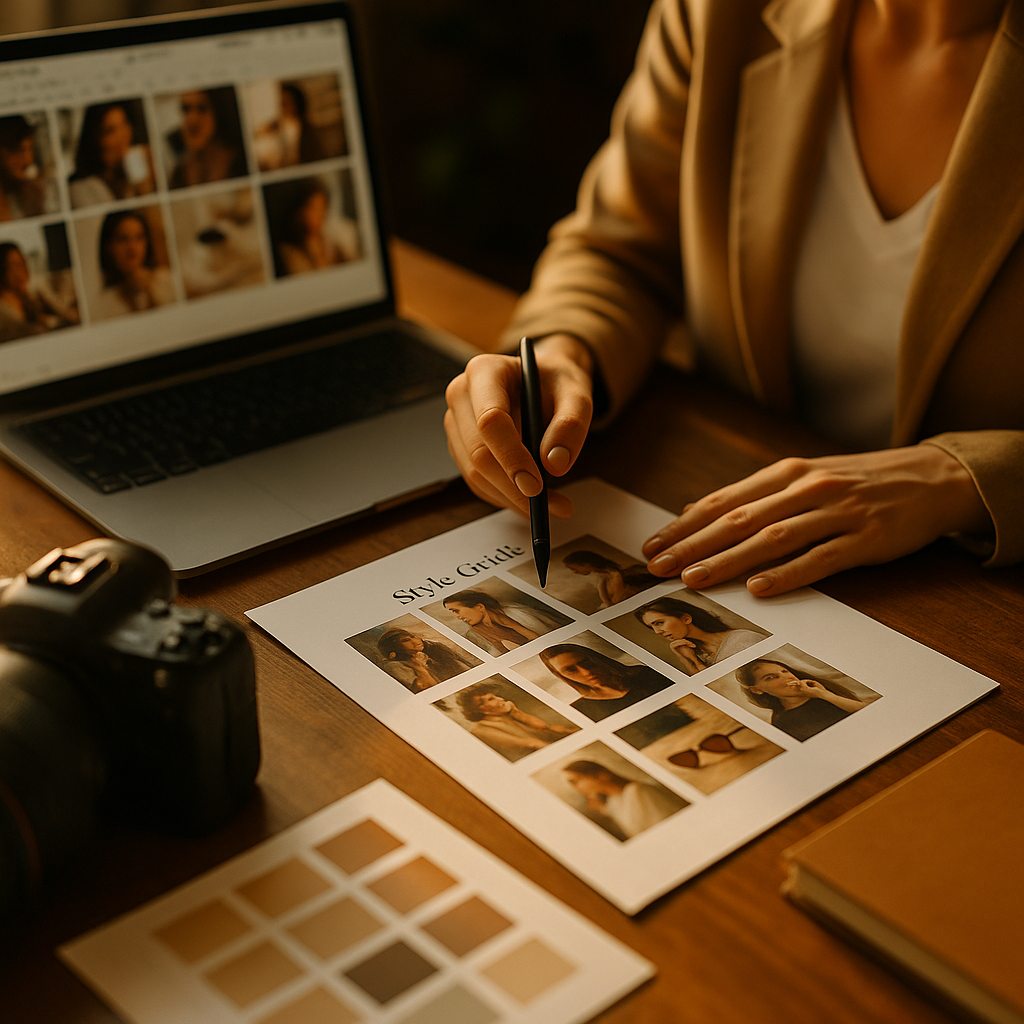Building a consistent, authentic visual identity is now a non-negotiable for businesses. Learning how to create a brand photography style guide that reflects your brand values is crucial for trust and recognition. Whether you’re a startup or an established name, mastering this art can elevate your brand in a crowded visual market. Ready to make your images speak volumes?
Why a Brand Photography Style Guide Matters for Authentic Branding
Visual consistency is the backbone of brand credibility. A well-designed brand photography style guide translates your brand values—such as transparency, innovation, or warmth—into a coherent photographic language. In 2025, consumers expect genuine representation and aesthetic alignment across platforms, and any disconnect can erode trust in seconds. Consistency not only supports brand recall but also builds emotional resonance with your audience.
Importantly, a photography style guide isn’t just for large corporations. Small businesses, personal brands, and organizations of all sizes can benefit. By outlining your approach to images, you empower everyone who touches your brand—from in-house teams to freelance photographers—to communicate with a singular, unified visual voice.
Identifying and Defining Your Core Brand Values in Photography
To ensure visual authenticity, start by clarifying your brand values. Ask: What do you stand for? What emotions should your brand evoke? List these out, then consider how each value can be visually expressed:
- Transparency: Use natural lighting, minimal editing, and candid moments.
- Innovation: Opt for dynamic angles, futuristic elements, or modern settings.
- Inclusivity: Feature diverse models and real-life scenarios.
- Quality: Prioritize sharp, high-resolution images with thoughtful composition.
Collaborate with key stakeholders to ensure alignment. If your team is remote or multinational, hold a workshop or survey to gather input. This stage is foundational—skipping it risks a style guide that feels generic or disconnected from your actual brand experience.
Deciding on Visual Elements: Style, Mood, and Subject Matter
The heart of your guide lies in defined visual parameters. Here’s how to translate abstract values into concrete photography directions:
- Style: Choose a style that mirrors your brand narrative. Are you drawn to editorial, documentary, or lifestyle photos? Do you prefer clean backdrops or bustling environments?
- Mood: Determine the tone—upbeat, serene, dramatic, earthy? Define in terms of color palette, lighting, and expressions.
- Subject Matter: Decide who or what features in your photos. People, products, environments, or a mix? Should the focus be on faces, hands, details, or wide shots?
- Technical Specs: Outline requirements for resolution, format, orientation, and acceptable post-processing. Specify standards for cropping, filters, and color corrections.
Review your competitors and industry leaders for inspiration and to spot gaps you can fill. According to a 2025 content survey by HubSpot, brands with unique visual storytelling report 35% higher customer engagement.
Documenting and Sharing Your Brand Photography Style Guide Effectively
To ensure successful implementation, your style guide should be:
- Accessible: Host it on a shared drive, internal wiki, or dedicated brand portal. Include high-quality visual examples with “do” and “don’t” lists.
- Clear: Write instructions in simple, actionable language. Avoid jargon wherever possible. Use bullet points or checklists for ease of reference.
- Comprehensive: Cover usage for different channels—website, print, social media, ads—and specify how to adapt the style for each context.
Train every team member who commissions, selects, or creates brand imagery. Consider a short video walkthrough or live Q&A session to reinforce key points. Update the guide annually, or whenever your brand values or products shift.
Measuring the Impact: Ensuring Brand Photography Reflects Your Values
How do you know your guide works? Start by reviewing recent content against your documented standards. Regularly solicit feedback from both internal teams and your target audience. Analytics can also provide insight—track engagement, shares, and time on page for your image-led content.
Tools like Google Analytics, Brandfolder, and digital asset management software allow you to monitor asset usage and consistency. In 2025, advanced AI tools can even flag off-brand images automatically. Remember, alignment isn’t just about aesthetics—it’s about forging stronger emotional connections and building lasting trust.
FAQs about Creating a Brand Photography Style Guide
- What is a brand photography style guide?
A brand photography style guide is a document that defines how images should look and feel in order to represent your brand values consistently. It covers topics like style, mood, subject matter, technical specifications, and usage examples.
- How often should I update my photography style guide?
Review and update your guide at least annually, or whenever you change your brand positioning, launch new products, or notice disconnects between your visuals and your intended message.
- Who should be involved in creating the guide?
Involve decision-makers from marketing, design, communications, and any external photographers or agencies. Getting input from across your organization leads to broader buy-in and greater clarity.
- Can startups benefit from a photography style guide?
Absolutely. Startups and small businesses set the foundation for brand perception by establishing visual consistency early. A style guide helps ensure every touchpoint feels intentional and professional.
- What tools can help maintain photography consistency?
Digital asset management tools like Brandfolder, Frontify, or Dropbox, combined with automated checks via AI, help teams easily access approved visuals and identify off-brand content.
A brand photography style guide rooted in your unique values is a powerhouse for authentic marketing. Define your ideals, document your visual standards, and share them widely to ensure every photo works for your brand. Start today, and let your imagery shape brand recognition and trust in 2025 and beyond.
